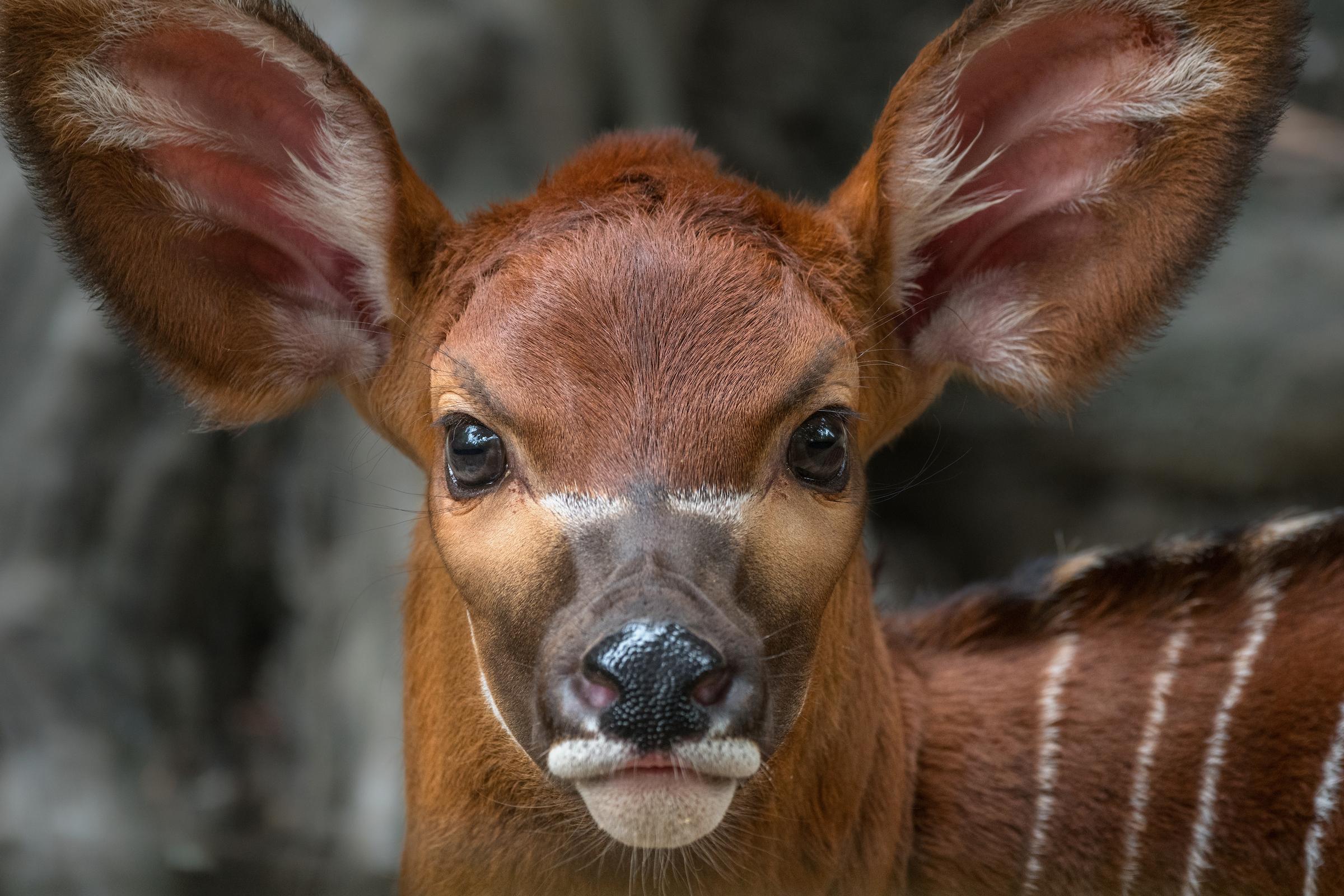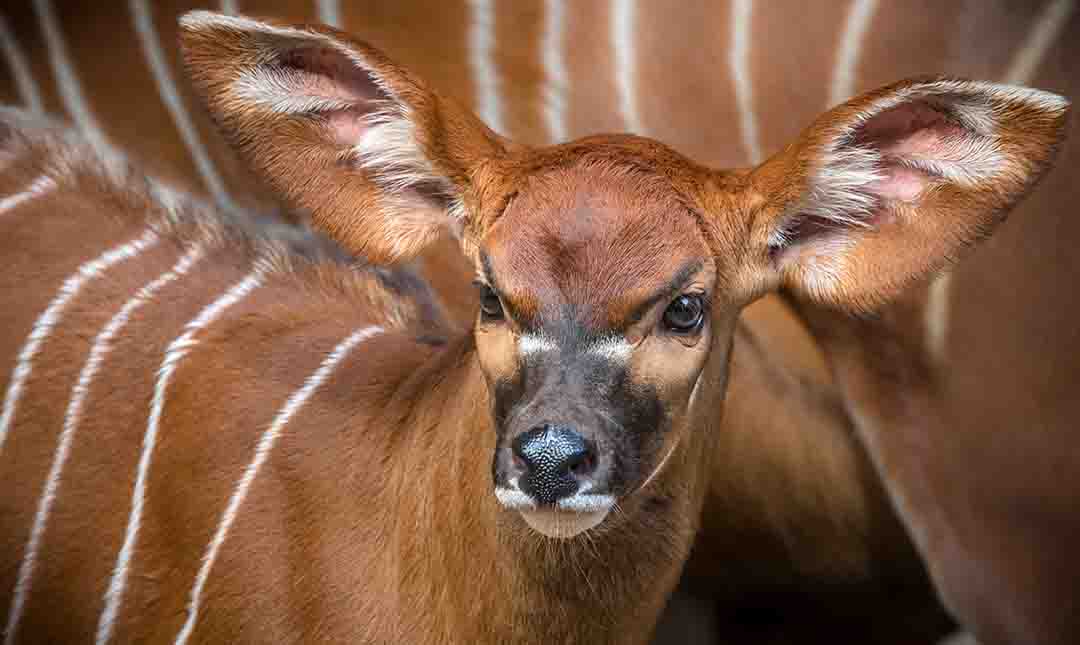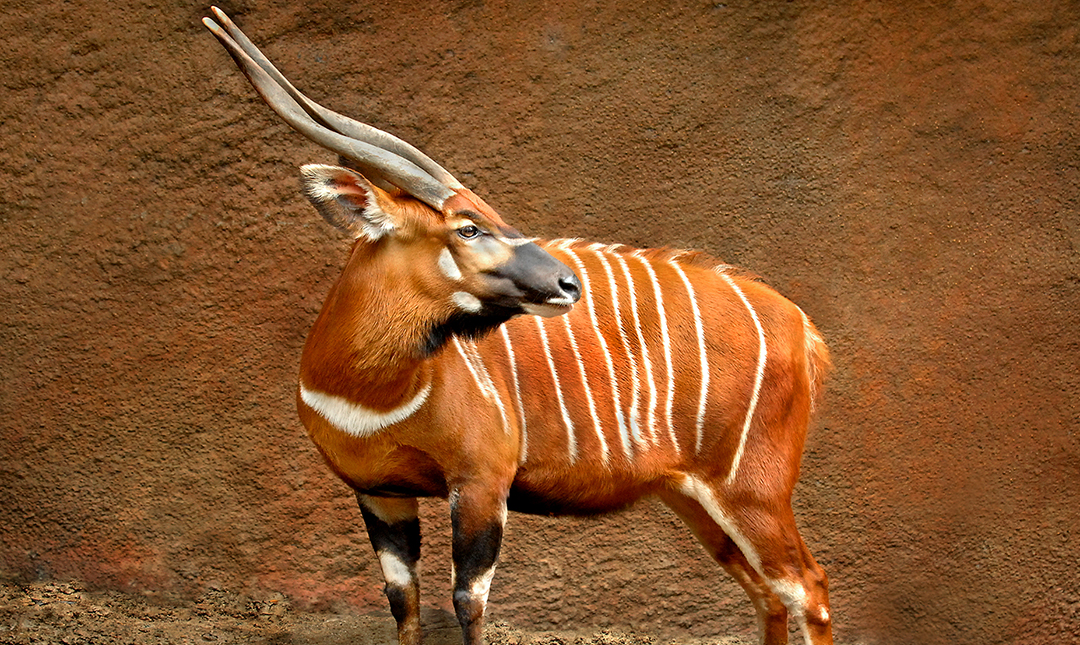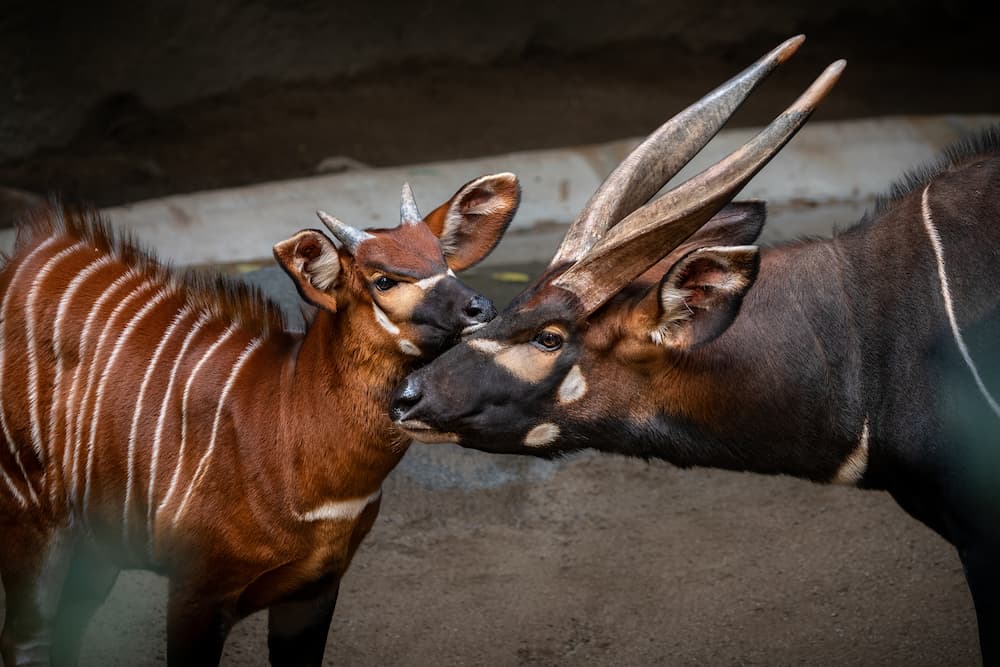About
Shy and elusive, mountain bongos are among the largest and heaviest forest antelopes. They are active between dusk and dawn. They are fast runners and excellent jumpers, though they prefer to go under or around any barriers. A male’s horns can reach three feet in length. When startled, they tilt their chins up, causing their horns to lie flush along their backs to avoid becoming entangled in the undergrowth as they swiftly run to escape. They do this so frequently that they often have bald spots on their backs from where the horns have rubbed away the fur. Females also have horns, but they are a bit smaller and thinner. Males tend to be solitary while females live in groups of six to eight.
Bongos’ large ears help them detect predators, which include lions, leopards, and humans. The bongo’s distinctive red-orange coat helps the animal disappear easily in the dim forest light. Bongos consistently have 10–15 stripes on each side. Stripes help break up the body outline in forest shadows. The pigment comes off their fur easily and can stain trees or other brush when they walk past.
Like giraffes, bongos have long prehensile tongues that are useful for feeding on foliage, and they can stand on their hind legs to reach tasty new growth up to eight feet off the ground. Horns are used to uproot saplings to access the roots, which are also eaten.
Female bongos usually give birth to a single calf weighing about 40 pounds. The gestation period is about nine months. The calves are precocial, which means they are able to stand and follow their mother shortly after birth. Calves are independent at about one year of age. Threats to the mountain bongo include hunting, diseases transmitted by domestic cattle, and habitat fragmentation. In 2004, a mountain bongo repatriation project took steps to restore the wild populations by transferring a group of 18 zoo-bred mountain bongos (including a female from the L.A. Zoo) to Mount Kenya Game Ranch in Africa, where they formed a breeding herd.
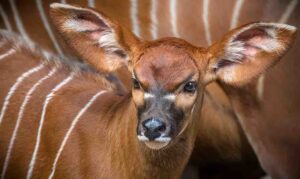

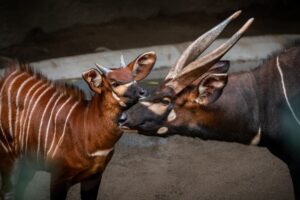
Status
There are two populations of bongo in Africa. One population is considered Near Threatened in West and Central Africa (often considered the lowland or Western bongo). The other population (often referred to as the Eastern or mountain bongo) is in Kenya and is critically endangered. Less than 100 individuals survive in four fragmented areas in the Aberdares Forest and on Mount Kenya.
Habitat
Bongos range throughout central Africa from the lowland forests of Sierra Leone to the bamboo forests of Kenya. During the dry season they live in forests at higher elevations, moving to lower areas during the wet season.
Diet
Bongos are browsers, eating the leaves and shoots of shrubs and trees. They require sodium in their diet and will visit natural salt licks in the wild. They have also been seen eating the wood from burned trees, possibly to obtain salt.
Physical Characteristics
Bongos are large antelopes standing four and a half at the shoulder and weighing up to 890 lbs. in males and 550 in females. Their horns can be more than three feet long, with the males being more flared than the females. Their coat is chestnut-red with 10 to 14 vertical white stripes. This coloration is effective camouflage for their forest habitat. Lifespan is 20 to 25 years.
LOCATION WITHIN THE ZOO
You’ll find this animal in the Africa section. See Zoo Map.

